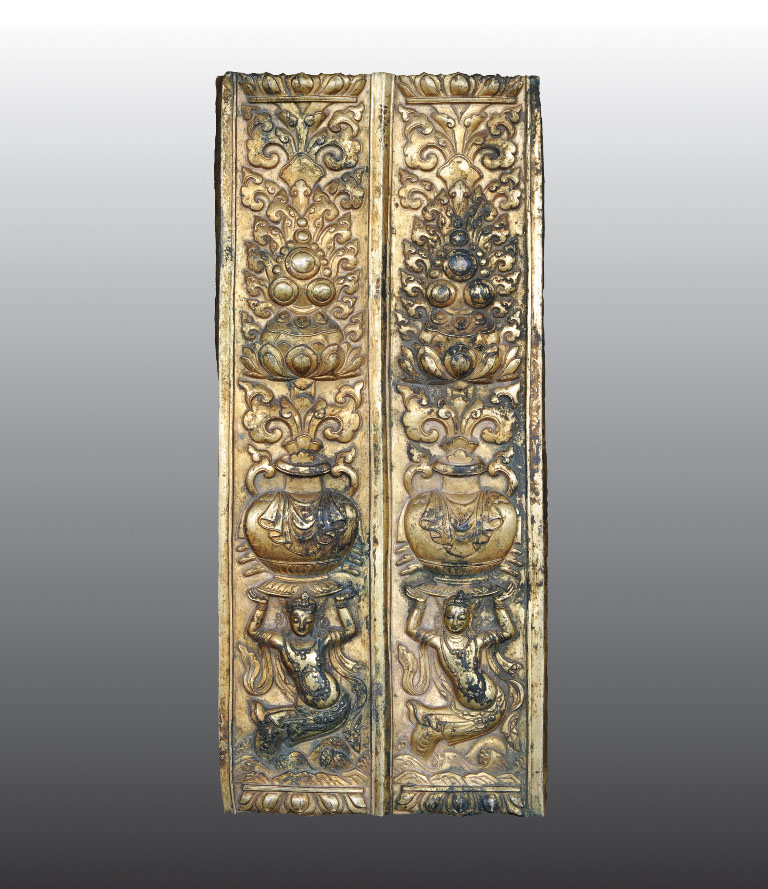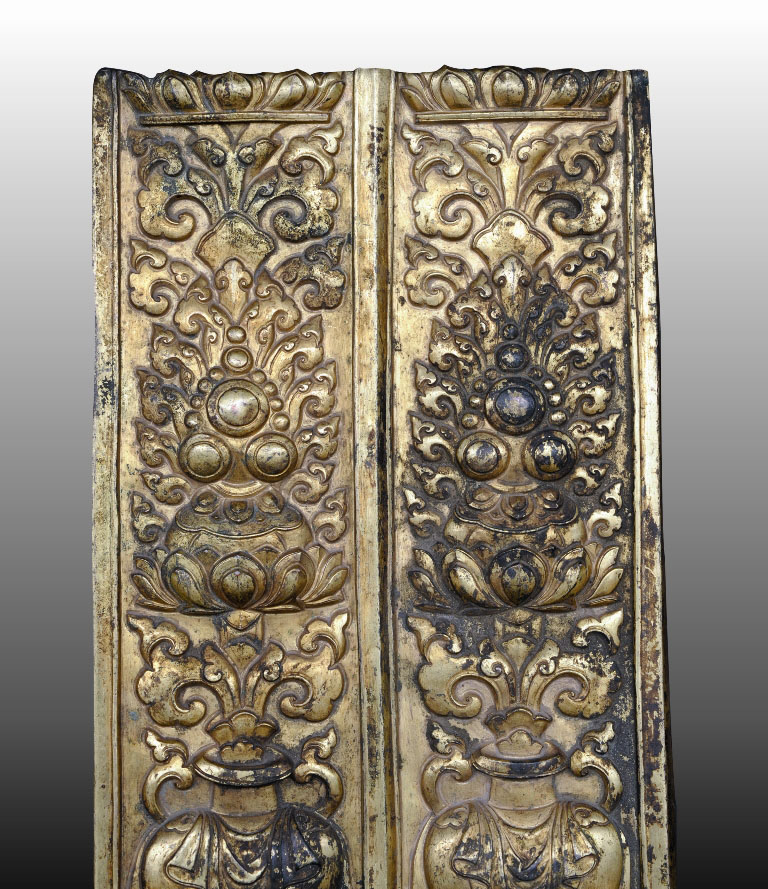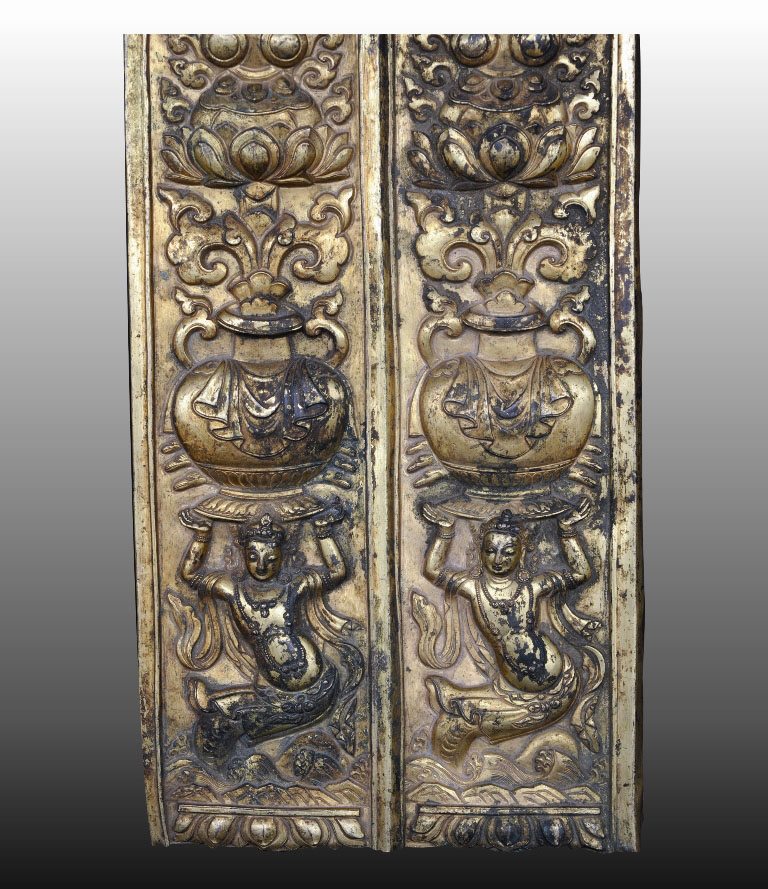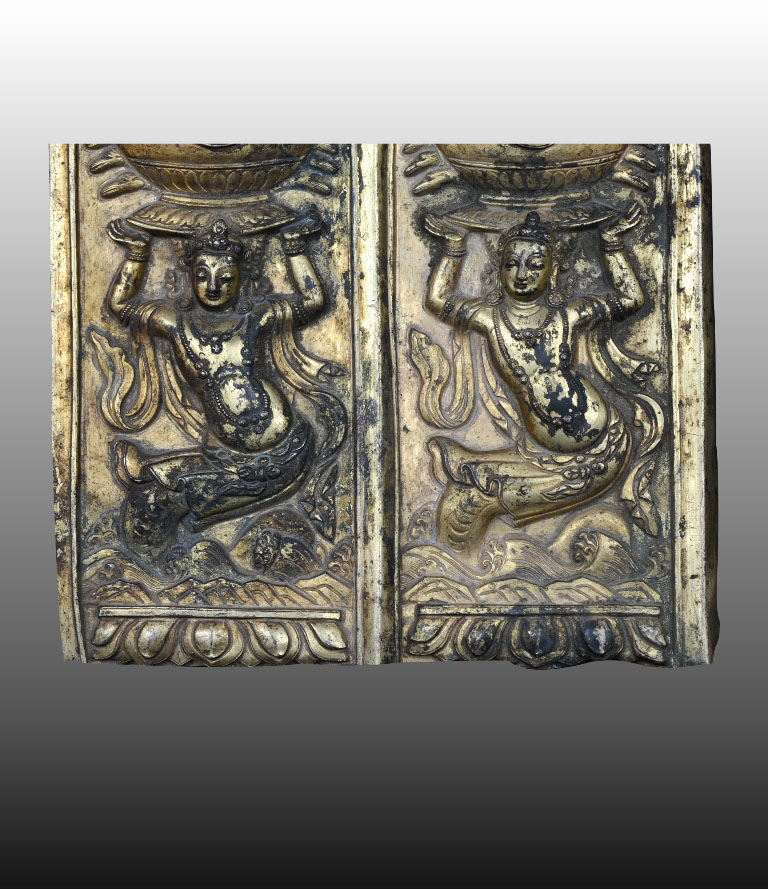Jamb decorationsTibet - Gilded copper - Height 52 x 22,5 cm. - 16th centuryThese embossed copper elements presumably produced by Newar artists possibly covered the jambs of the doorway to a temple. They depict two Nâgas, surmounted by a number of sacred symbols. Nâgas are snake deities which live in and protect the underworld, and whose origin is related to ancient cults dating back to the period of the civilization of the Indus Valley. One of the earli- est representations of snake deities is visible on a seal from Mohenjo-Daro, in Pakistan (1). Indian tradition has it that they keep extraordinary treasures and palaces, and that their reign is governed by three great sovereigns mentioned in several Puranic legends. The cult of the Nâgas was absorbed by Buddhism at a very early stage, whilst still keeping its own characteristics, and their mythical. Their reign spread from the underworld to all water sources: lakes, rivers, springs. Eight great Nâga Kings are commonly mentioned in Buddhist texts. Nâgas can manifest themselves not only as snakes, but also as beings which are part human part snake, or completely human. The lower part of the body of the two depicted here emerging from the water is snake-like and is partially covered by a short garment which flutters in the wind. These two Nâgas hold the Vase of Inexhaustible Treasures(2) surmounted by a lotus flower, on which there are three flaming jewels symbolizing the Buddha, his doctrine and the community of his followers. The vase is partially covered with a silk scarf from the kingdom of the gods and contains the water of longevity which can produce all kinds of precious gifts, both spiritual and material. The function of the vase surmounted by the Three Jewels is to bestow abundance and keep ill- omened forces away. (1) Cf. Susan L. Huntington - John C. Huntington, The Art of Ancient India, Weatherhill, Boston - London 2006, p. 22, fig. 2.14. (2) Cf. Robert Beer, The Handbook of Tibetan Buddhist Symbol, Serindia, Chicago - London 2003, pp. 6-7. ALC (Free Circulation) |



